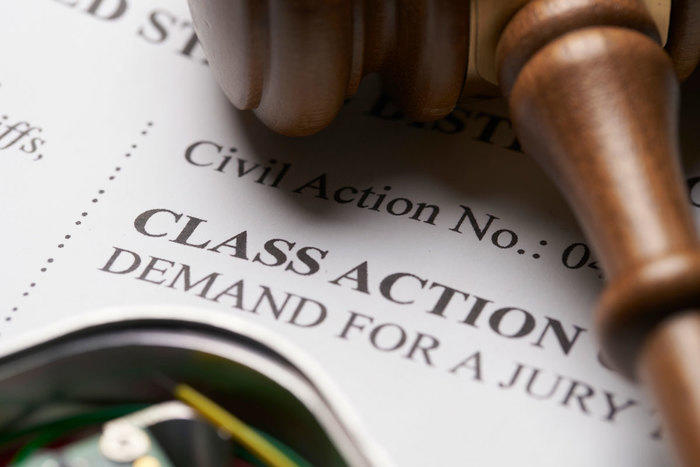Collective Justice: The Power and Refine of Class Action Lawsuit Claims
Recognizing Course Activity Legal Action: A Guide for Attorney
Class action suits have become an integral component of the lawful landscape, permitting for the combination of multiple cases right into a solitary activity. For legal representatives, recognizing the complexities of class activity lawsuits is crucial in successfully representing their clients. This comprehensive overview explores the principles of course action suits, from recognizing prospective class participants to browsing the qualification process. Additionally, it delves right into essential methods for managing course activity litigation and offers insights right into obtaining and bargaining approval for settlements. By diving right into the complexities of class action claims, this guide outfits lawyers with the knowledge and devices needed to successfully navigate this intricate area of regulation.
The Basics of Class Action Suits
Course action legal actions are a legal system employed to consolidate similar cases from a group of individuals right into a solitary suit, providing a effective and cost-effective strategy to seeking justice and resolution. This kind of lawsuit allows a representative complainant, acting upon behalf of the entire class, to bring an insurance claim versus an accused that has actually supposedly created harm or breached the rights of multiple individuals.
The fundamental demands for bringing a course activity claim consist of numerosity, commonness, typicality, and adequacy of representation. Numerosity refers to the reality that the course have to be so large that joinder of all participants would certainly be unwise. Commonness indicates that there have to prevail inquiries of law or truth that are shared by all members of the class. Typicality requires that the claims of the depictive complainant are typical of the claims of the whole course. Competence of representation guarantees that the representative complainant will adequately stand for the interests of the entire class.
Class activity legal actions can be helpful for both plaintiffs and defendants. For complainants, it allows them to pool their resources and share the costs and dangers connected with litigation. It also offers an equal opportunity when they are up versus large firms or entities. For accuseds, it uses the opportunity to successfully fix multiple insurance claims in a single claim, avoiding the demand to defend versus countless private lawsuits.
Identifying and Assessing Possible Course Members
After developing the standard requirements for a class activity lawsuit, the following action is to recognize and evaluate prospective class participants. This process involves identifying that may become part of the course and assessing their insurance claims to figure out if they fulfill the necessary criteria.
To determine prospective class members, lawyers normally perform considerable research and collect appropriate info. This might include examining papers, carrying out interviews, and analyzing records to identify people or entities that may have been influenced by the alleged misdeed. It is essential to develop a clear and detailed listing of potential class participants to make certain that all influenced celebrations are included in the suit.
As soon as prospective class participants have been identified, the following step is to analyze their insurance claims. If they satisfy the legal needs for class qualification, this includes reviewing the values of each private claim to figure out. Lawyers have to thoroughly assess the facts, proof, and legal theories of each possible class participant's insurance claim to ensure that they have a feasible instance.
Evaluating prospective course participants likewise entails establishing whether they fulfill the course meaning and have actually suffered similar harm as a result of the accused's activities. This needs comparing the truths and conditions of each potential class participant's scenario to the allegations and legal concepts placed forth in the legal action.
Browsing the Course Accreditation Refine
To successfully navigate the class qualification process, attorneys have to diligently stick to the procedural demands set forth by the court. Class accreditation is a critical action in a class action suit, as it establishes whether an instance can continue as a course action, standing for a team of people that have comparable claims versus an offender. The procedure entails satisfying certain requirements, such as numerosity, commonness, typicality, and adequacy of representation.
First of all, lawyers have to develop numerosity by demonstrating that the class is so big that specific joinder is not practical. This requires a comprehensive evaluation of the defenses and cases entailed.
Next, attorneys have to show typicality, which suggests that the depictive plaintiff's insurance claims are regular of the claims of the class participants. This guarantees that the rate of interests of the representative complainant align with the passions of the class. Last but not least, attorneys have to demonstrate competence of representation, suggesting that the representative complainant and their counsel will rather and sufficiently stand for the interests of the class.
To navigate this process effectively, legal representatives need to thoroughly prepare by carrying out considerable research, gathering proof, and establishing an engaging argument that satisfies each of these requirements. They must likewise be prepared to react to any kind of arguments or difficulties increased by the offender. By diligently sticking to the procedural demands stated by the court, legal representatives can enhance their possibilities of getting class certification and advancing the rate of More about the author interests of the class members.

Trick Strategies for Taking Care Of Class Activity Litigation
Upon effectively browsing the class certification procedure, lawyers need to after that execute crucial techniques for properly managing course action litigation. These approaches are critical to guarantee that the instance continues smoothly and efficiently, inevitably taking full advantage of the opportunities of a favorable outcome for the class members.
One secret method is to develop a solid and cohesive lawful team (Class action lawsuit). This involves setting up a team of attorneys with knowledge in class action litigation, as well as various other pertinent locations such as the specific industry or subject matter associated with the instance. A versatile group can bring different perspectives and skills to the table, improving the total efficiency of the lawsuits
An additional essential method is to develop a well-balanced and extensive litigation plan. This plan should outline the overall objectives of the case, as well try this web-site as the specific lawful concepts and disagreements that will certainly be gone after. It ought to also include a timeline and spending plan to guarantee that the situation stays on track and within the allotted sources.
In addition, attorneys ought to actively involve with the course members throughout the lawsuits procedure (Class action lawsuit). This includes providing normal updates on the development of the case, looking for input and comments from the course members, and attending to any concerns or inquiries they may have. By fostering open interaction and partnership, legal representatives can construct depend on and support amongst the class participants, which can be important in achieving an effective resolution
Clearing Up Class Action Lawsuits: Arrangement and Authorization
When it concerns working out class action lawsuits, reliable settlement and getting approval are crucial action in achieving a resolution. Course action claims are complex and include a multitude of plaintiffs, making it vital to get to a settlement that is reasonable and acceptable to all parties involved.

Once a settlement agreement is gotten to, it needs to be accepted by the court. The court's duty in this procedure is to ensure that the settlement is fair, affordable, and adequately safeguards the rate of interests of the class members. The court will think about aspects such as the nature of the insurance claims, the stamina of the evidence, the potential recovery for the class participants, and any kind of arguments elevated by course participants.
Acquiring court authorization is vital as it supplies finality to the negotiation and secures the rate of interests of the class participants. It makes sure that the settlement is binding and enforceable, and class members can get their rightful payment.
Conclusion

Course action legal actions have become an integral component of the lawful landscape, permitting for the consolidation of numerous cases into a solitary action. Course certification is a critical action in a class activity claim, as it identifies whether an instance can continue as a class action, standing for a group of individuals who have similar cases versus an accused. By diligently sticking to the step-by-step demands established forth by the court, lawyers can raise their chances of acquiring course accreditation and progressing the interests of the course participants.
The court will take into consideration factors such as the nature of the insurance claims, the toughness of the evidence, the possible recovery for the class participants, and any kind of objections raised by course participants.
By identifying and evaluating possible course members, attorneys can establish the viability of a class activity claim.